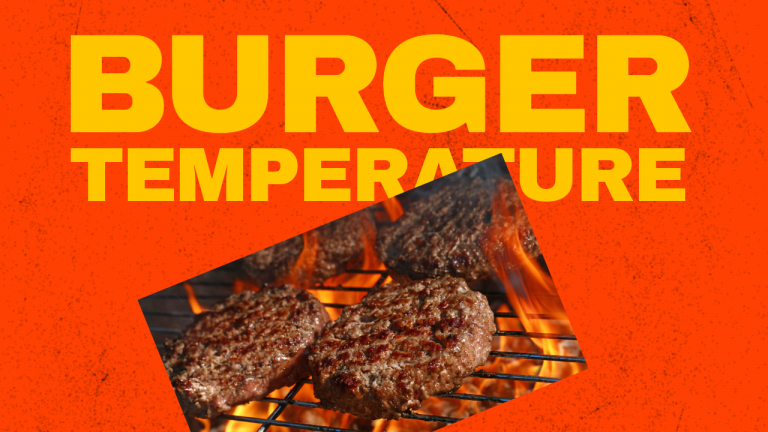The Essential Burger Temperature Chart: Your Guide to Perfectly Cooked Burgers
Grilling juicy, delicious burgers is a quintessential summer (or anytime!) activity. But getting that burger cooked just right, without drying it out or undercooking it, can be a challenge. That’s where a burger temperature chart comes in as your secret weapon.
Why Does Burger Temperature Matter?
Cooking burgers to the proper internal temperature isn’t just about personal preference— it’s a matter of food safety and flavor.
- Food Safety: Ground beef can contain harmful bacteria like E. coli and Salmonella. Cooking your burgers to the correct internal temperature, as recommended by the USDA, ensures that these bacteria are destroyed, making your burgers safe to eat.
- Flavor and Texture: Overcooking a burger leads to a dry, crumbly patty. On the other hand, an undercooked burger may not have developed the best flavor. A burger temperature chart helps you hit that sweet spot of doneness for maximum juiciness and deliciousness.
The Ideal Burger Temperature Chart
The USDA recommends a minimum internal temperature of 160°F (71°C) for ground beef burgers. However, many burger aficionados enjoy various levels of doneness. Here’s a breakdown:
- Rare: 120-125°F (49-52°C) – Bright red center, very soft.
- Medium-Rare: 130-135°F (54-57°C) – Warm red center, slightly firmer.
- Medium: 140-145°F (60-63°C) – Pink center, firm texture.
- Medium-Well: 150-155°F (66-68°C) – Slightly pink center, mostly firm.
- Well-Done: 160-165°F (71-74°C) – No pink, very firm.
Tips for Using a Burger Temperature Chart
- Invest in a good meat thermometer: An instant-read digital meat thermometer is a must-have for accurate temperature readings.
- Insert the thermometer into the thickest part: Get a reading from the center of the patty, making sure not to touch the grill or pan.
- Let your burgers rest: Once your burgers reach the desired temperature, remove them from the heat and let them rest for a few minutes before serving. This allows the juices to redistribute for a more enjoyable burger.
How to Tell Doneness Without a Thermometer (But It’s Less Reliable)
If you don’t have a thermometer, here are some less reliable clues:
- Touch Test: Practice pressing on burgers of known doneness to get a feel. Rare burgers will be very soft, while well-done burgers will be very firm.
- Color Test You can use color as a very rough guide, but it’s not the most accurate method. Undercooked burgers will be visibly redder inside, turning brown as they cook.
Important Notes
- Ground poultry: If you’re cooking turkey or chicken burgers, always aim for an internal temperature of 165°F (74°C) for food safety.
- Personal preference: Everyone has their favorite level of doneness. The burger temperature chart serves as a helpful guide, but don’t be afraid to experiment.
- Food safety matters most: When in doubt, it’s better to err on the side of caution with food safety. If you’re unsure, cook your burger a bit longer.
Additional Tips for Grilling the Perfect Burgers
- Use quality ground beef: Start with good quality ground beef with a fat content of around 80/20 for the best flavor and juiciness.
- Handle the meat minimally: Overworking the ground beef can make your burgers tough.
- Season generously: Don’t be shy with salt and pepper, and feel free to add other seasonings you love.
- Preheat your grill: A hot grill will help create a delicious sear on the outside of your burgers.
- Don’t press down on the burgers: Resist the urge to press down with a spatula. This squeezes out the flavorful juices.
In Conclusion
A burger temperature chart is an invaluable tool for any grill master or burger lover. By understanding the different levels of doneness and ensuring your burgers reach the recommended internal temperature, you’ll be well on your way to grilling safe, delicious burgers every time.

